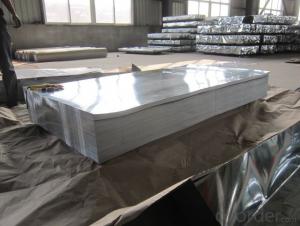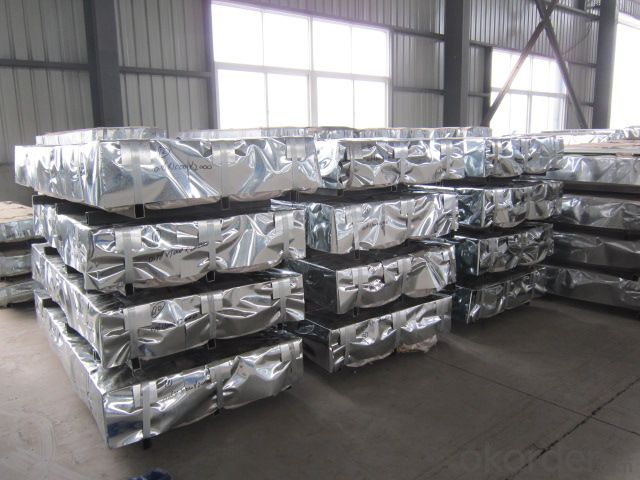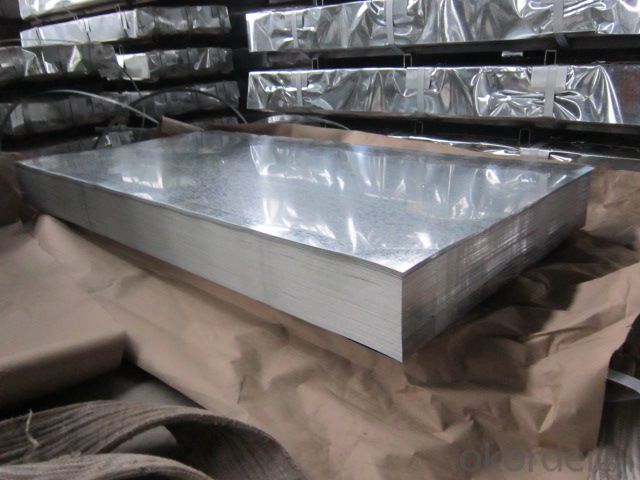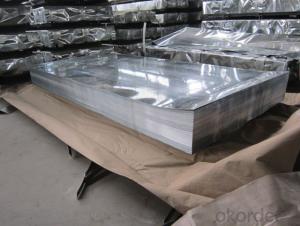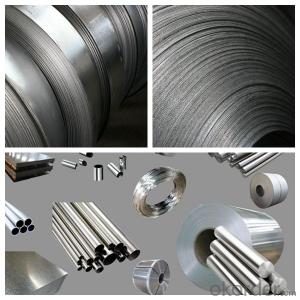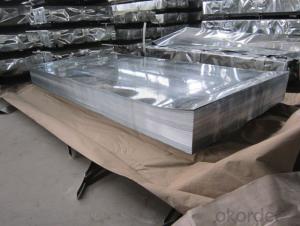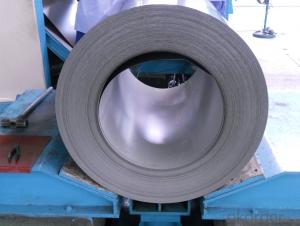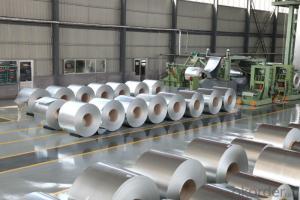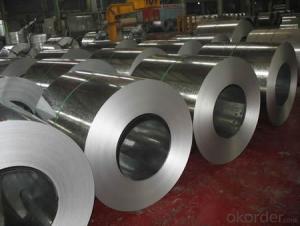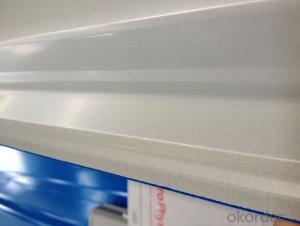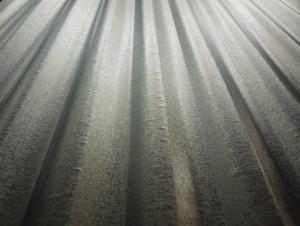Hot-dip Galvanized Steel Sheets in Sheet
- Loading Port:
- Shanghai
- Payment Terms:
- TT OR LC
- Min Order Qty:
- 25 m.t.
- Supply Capability:
- 1000 m.t./month
OKorder Service Pledge
OKorder Financial Service
You Might Also Like
Description:
The external layer is all zinc, but successive layers are a mixture of zinc and iron, with an interior of pure steel. These multiple layers are responsible for the amazing property of the metal to withstand corrosion-inducing circumstances. Zinc also protects the steel by acting as a "sacrificial layer." If rust does take hold on the surface of Galvanized Steel Coil, the zinc will get corroded first. This allows the zinc that is spread over the breach or scratch to prevent rust from reaching the steel.
Architecture Roofs and outside walls of civilian and industrial buildings, garage doors, fencings
1. Good Resistance to Corrosion
2. Qualified Processing Machinability
3. High Thermal Resistance
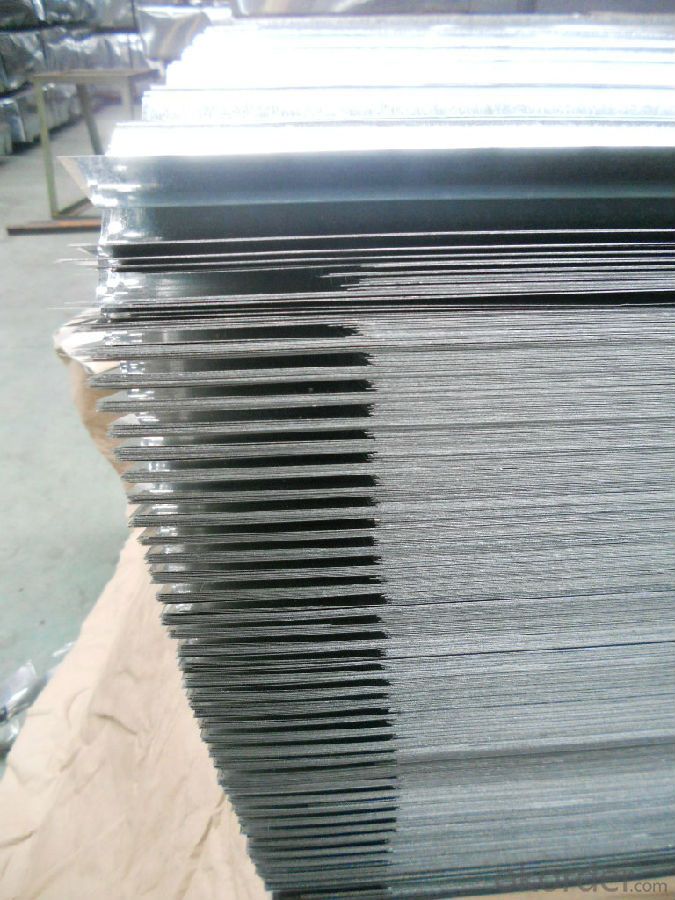
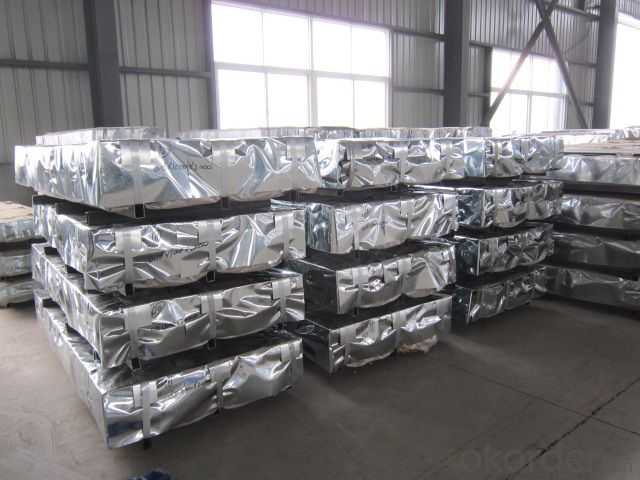
Application:
Construction, packaging, railway vehicles, agricultural machinery and daily life.
For countless outdoor, marine, or industrial applications, Galvanized Steel Coil is an essential fabrication component.
Architecture Roofs and outside walls of civilian and industrial buildings, garage doors, fencings and window blinds.
Appliances Industry Outer clad sheets for washing machine, refrigerator, television, air conditioner and ventilation system, explosion-proof strip, solar water heater and appliance parts.
Product Specification:
Base sheet : galvanized steel sheet, pre painted galvanized steel sheet
Zinc:40G-275G
Thickness:0.12mm-3.0mm
Width:600mm-1250mm
Length:1000mm-11800mm or as request
Package:3 layers of packing, inside is kraft paper,water plastic film is in the middle and outside GI steel sheet to be covered by steel strips with lock.
FAQ:
1.How many pieces for one ton of the Hot-dip Galvanized Steel Sheet?
The pieces for one tone is decided by the thickness of the sheet, but we can make it according to your requirements in the reasonable range.
2. Do you have pallets for the package?
Yes, we must use pallets for the package in order to load.
3. How many tons do you load in one 20’FCL?
- Q: Can steel sheets be used for food processing equipment?
- Yes, steel sheets can be used for food processing equipment. Stainless steel is a popular choice for food processing equipment due to its durability, corrosion resistance, and ease of cleaning. It is non-reactive with food and does not impart any unwanted flavors or odors. Steel sheets can be formed into various shapes and sizes, making them suitable for different types of food processing equipment such as mixers, conveyors, tanks, and cutting blades. Additionally, stainless steel is also resistant to high temperatures, making it ideal for applications that involve heat. Overall, steel sheets are a reliable and hygienic material choice for food processing equipment.
- Q: How do steel sheets perform in fire-rated applications?
- Due to their high melting point and excellent structural integrity, steel sheets are highly effective in fire-rated applications. When exposed to fire, steel sheets retain their strength and stability, making them a dependable choice for fire-resistant construction. Furthermore, steel sheets do not contribute to the spread of fire or the release of harmful fumes, thereby enhancing the safety of occupants during a fire incident. In addition, steel sheets offer exceptional thermal insulation, preventing the transfer of heat from the fire to other parts of the building. This characteristic enables the containment of fires and minimizes the resulting damage. In conclusion, utilizing steel sheets in fire-rated applications offers a sturdy and efficient solution for fire protection in buildings.
- Q: Are steel sheets suitable for outdoor applications?
- Yes, steel sheets are suitable for outdoor applications. Steel is highly durable, weather-resistant, and can withstand harsh environmental conditions, making it an excellent choice for outdoor usage.
- Q: What are the common applications of hot-rolled steel sheets?
- Hot-rolled steel sheets are commonly used in a variety of applications, including construction projects such as buildings, bridges, and infrastructure. They are also used in the automotive industry for manufacturing parts like frames, chassis, and body panels. Additionally, hot-rolled steel sheets find their application in manufacturing appliances, pipelines, furniture, and various other metal products.
- Q: What is the tensile strength of the steel sheets?
- The tensile strength of steel sheets varies based on the specific grade and thickness of the steel. In general, steel sheets have a tensile strength that falls between 370 and 1,500 megapascals (MPa). However, it is important to note that different types of steel sheets possess different tensile strength values. For instance, low carbon steel sheets typically exhibit a tensile strength ranging from 370 to 550 MPa, while high-strength low alloy (HSLA) steel sheets can possess tensile strengths that span from 450 to 1,200 MPa. Furthermore, the thickness of the steel sheets also impacts their tensile strength, with thicker sheets generally displaying higher tensile strength values. Therefore, it is critical to refer to the specifications provided by the manufacturer or supplier of the steel sheets to ascertain the precise tensile strength for a particular grade and thickness.
- Q: Excuse me, what's the difference between cold rolled steel plate and hot plate in steel plate?
- The production process of cold rolled steel plate and hot rolled steel plate is different. Hot rolling is rolled at high temperature, and cold rolling is blown at room temperature
- Q: What are the different forms of steel sheets (flat, perforated, expanded, etc.)?
- Steel sheets are available in various forms to suit different applications and requirements. Some of the different forms of steel sheets include: 1. Flat Steel Sheets: These sheets have a smooth and flat surface and are commonly used in construction, fabrication, and manufacturing industries. They are versatile and can be easily cut, shaped, and formed into various products. 2. Perforated Steel Sheets: These sheets feature small holes or perforations that are evenly spaced. They are commonly used for filtration, ventilation, and decorative purposes. Perforated steel sheets provide excellent airflow and visibility while maintaining structural integrity. 3. Expanded Steel Sheets: These sheets are created by cutting and stretching a flat sheet of steel, resulting in a mesh-like pattern. Expanded steel sheets are lightweight, strong, and provide excellent ventilation and drainage. They are commonly used in walkways, gratings, fencing, and security applications. 4. Galvanized Steel Sheets: These sheets are coated with a layer of zinc, which provides excellent corrosion resistance. Galvanized steel sheets are commonly used in outdoor applications where exposure to moisture and harsh weather conditions is a concern. 5. Stainless Steel Sheets: These sheets are made from an alloy of steel and chromium, which provides excellent corrosion resistance and high tensile strength. Stainless steel sheets are commonly used in the food industry, transportation, medical equipment, and architectural applications. 6. Cold Rolled Steel Sheets: These sheets are produced by rolling steel at room temperature, resulting in a smooth and even surface. Cold-rolled steel sheets have improved surface finish, dimensional accuracy, and strength. They are commonly used in automotive, appliances, and furniture industries. 7. Hot Rolled Steel Sheets: These sheets are produced by heating steel above its recrystallization temperature and then rolling it. Hot-rolled steel sheets have a rougher surface and are more malleable compared to cold-rolled sheets. They are commonly used in structural components, construction, and general fabrication. These are just a few examples of the different forms of steel sheets available. Each type of steel sheet has its own unique properties and advantages, making them suitable for various applications and industries.
- Q: Can steel sheets be used for water treatment facilities?
- Yes, steel sheets can be used for water treatment facilities. Steel is a commonly used material in these facilities due to its durability, resistance to corrosion, and ability to withstand high pressure and temperature. Additionally, steel sheets can be easily fabricated and installed, making them suitable for various applications within water treatment facilities such as tanks, pipes, and equipment.
- Q: What are the common applications of galvanized steel sheets?
- Galvanized steel sheets are commonly used in various applications such as roofing, siding, automotive manufacturing, construction, and agricultural equipment.
- Q: Larson steel sheet pile and what is the difference between the hot cold
- The difference between cold bending and hot rolling is different from the name of the manufacturing process.Therefore, the wall thickness of cold-formed steel sheet piles is the same, and the wall thickness of hot rolled steel is different from different parts, and the nozzle can be made thick.
Send your message to us
Hot-dip Galvanized Steel Sheets in Sheet
- Loading Port:
- Shanghai
- Payment Terms:
- TT OR LC
- Min Order Qty:
- 25 m.t.
- Supply Capability:
- 1000 m.t./month
OKorder Service Pledge
OKorder Financial Service
Similar products
Hot products
Hot Searches
Related keywords
